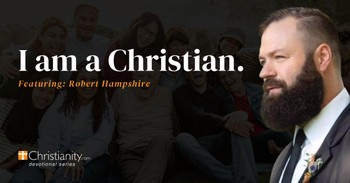In many situations longtime members reflect the history or past of the area and the newcomers represent its future. In an exchange of gifts, each may recognize their need for what the other has to give. ...
Here we mention four basic resources that leaders can use to bring the tension of cultural differences into constructive dialogue. ...
Organizational Activities
Churches frequently want the energy and the economic support of new members, but do not know how to assimilate them into the congregational culture. One approach to assimilating newcomers is through the common ground of organizational activities. Smaller congregations try to assimilate the newcomers into the existing groups and activities. After all, there are not many groups, and every warm body is appreciated for the sharing of the work load. However, newcomers who do not honor the past often find themselves unwelcome.
Larger congregations can assimilate many newcomers by creating new tasks with new purposes. Thus, goal setting is one means of evangelism, creating many activities that need active support to accomplish. ...
Shared Memories
A second method of assimilation is through the shared memories of common stories. ... The purpose of the stories is to affirm the sense of belonging and to rehearse the values that hold the congregation together.
Newcomers can bring their own stories to enrich the life of the church, but they must also absorb the memories that hold the congregation together. Unfortunately, many prospective members do not slow down long enough to hear the local church stories. They are so oriented to programs and the productive use of time that they do not recognize the importance of listening to the significant stories of the longtime church members. Sensitive pastors can help, but new members must want to listen and to share their histories.
Annual Events
A third approach makes use of annual events that provide a kind of birthday party for the old-timers in the church. These celebrations provide time for the congregation to remember its stories and sing its songs. ...
Annual events are an excellent time to bring new people into the memory of congregational stories.
Anniversaries and birthdays provide an occasion for sharing the past, mixing cultural backgrounds, and transcending generational differences. ...
Remembered History
Fourth, in a more formal way, a "night of remembrance" may also be used to bring newcomers into the flow and stories of congregational memory. As described in The Handbook for Congregational Studies, the night of remembrance is a celebration in the life of a congregation for remembering those events and persons who have shaped the congregation and in whom their memories are anchored. Such a night of remembrance can reach back to the formative experiences of congregational life and reach forward in the hopes and expectations of contemporary members. It can show the critical moments of crisis that the congregation has faced and the patterns of conflict and solution that have been typical in this congregation's history.
Excerpted with permission from Developing Your Small Church's Potential by Carl S. Dudley and Douglas Alan Walrath, copyright 1988 by Judson Press, Valley Forge, Penn., www.judsonpress.com, 1-800-4-JUDSON. All rights reserved.
Carl S. Dudley is Professor of Church and Community at McCormick Theological Seminary in Chicago, Ill. Douglas A. Walrath is director of the Small Church Leadership Program at Bangor Theological Seminary in Bangor, Maine. He is also the general editor of the Small Church in Action series.
Are you a longtime church member, or a visitor or new member in your current congregation? Do you have good relationships with others in the church who have been there longer or less time than you? Why do you think it's important to make both old-timers and newcomers feel welcome? Visit Crosswalk's forums to discuss this topic:








